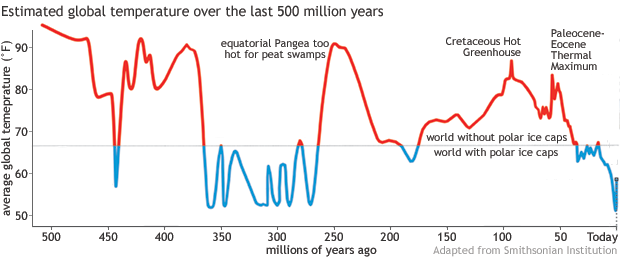computational linguist more like bomputational bimgis
- 0 Posts
- 87 Comments
Shhh shhh no we have to make the peasants believe every exploitable activity is an intelligent sidehustle. THEIR idea. Not something that will be forced upon them by capitalism. How do you think we create like half of professions ever?
What in the hell is a “Caramel Ribbon Cursetard”
What do you mean women don’t like a FOSS privacy-oriented user experience? Don’t they like going through 500 pages of documentation when Gentoo breaks only to realize all along that the problem was fixed by turning the computer off and on again?
What do you mean men don’t like that either?? What kind of place is this?!
Yea but it’s inefficient. USB-A has a significantly lower transfer rate than USB-C so it’ll bottleneck
Objectively disgusting. How can one connector be so chunky while still being asymmetric?
a slave-master dynamic
please don’t use that term, every time i see it i immediately verge on orgasming. you’ve already made me ruin 2 undergarments today. i have a serious bdsm kink and this is not funny.

 12·1 month ago
12·1 month agoFor a lot of English speakers, the “had” and “have” in contractions is completely omitted in certain contexts. It’s more prevalent in some dialects (I’m in the south US and it’s more common than not). Usually “had” is dropped more than “have”.
Also, English can drop the pronoun, article, and even copula for certain indicative statements. I think it’s specifically for observations, especially when the context is clear.
looking at someone’s bracelet “Cool bracelet.” [That’s a]
wakes up “sigh Gotta get up and go to work…” [I’ve]
“Ain’t no day for picking tomatoes like a Saturday.” [There]
“No war but class war!” [There’s]
“Forecast came in on the radio. Says there’s gonna be a hell of a lot of rain today.” [It said -> Says/Said]
“Can’t count the number of Brits I’ve killed. Guess I’m just allergic to beans on toast.” [I; I]
“House came tumblin’ down after the sinkhole opened up” [The]
“I’d” can be “I would”, mainly if used with a conditional or certain conjunctions/contrastive statements (if, but, however, unfortunately). Also when preceding “have” – e.g. “I’d have done that”. Because “I had have” doesn’t make sense, nor does “I had <present tense>” anything. “I’d” as in “I had” is followed by a past participle.
“I’d” is usually “I had” otherwise, forming the past perfect tense. But in “I’d better”, it’s a bit confusing because “had better” is used in a different sense – the “had” here comes from “have to” (as in “to be necessary to”) and can be treated as both a lexical verb and an auxiliary verb. “had better” is a bit of a leftover of more archaic constructions.



they’ll be fine. we won’t be though

 8·1 month ago
8·1 month agoWell for the most part if we want to have a less context-dependent measure, with some caveats – “left” is advocates of a socialist (or communist if you wish to separate them) economic system and social equality, and “right” is advocates of a capitalist or fascist economic system and social hierarchy. Around the center would be where social democrats/capitalists who want strong social safety are, or in other words people who want a mixed-economy/regulated capitalism and are for the most part socially progressive.
Also it’s hard to tell what you mean by “pure libs” but in most of the world that implies extremely free-market capitalist and pro-discrimination under the guise of “free speech” – very to the right. They’re usually called “libertarians” or “ancaps” in the US.
If by “pure lib” you mean a principled American “liberal” then there’s not really much to differentiate that from a social democrat – in practice America’s liberal politicians are either social democrats, or corrupt politicians who suck up to corporate money and stand in the way of social democrats – the latter definitely not being centrists. Same goes for “social liberals”.
Either way there is no chance that democratic socialists are as extremist as national conservatives. Democratic socialists are barely left of social democrats, so much so that social democrats label themselves democratic socialists all the time. The ideology is dependent upon reforming a fundamentally capitalistic system in an attempt to achieve socialism, while more lefty ideologies are focused on forcing the ruling/regressive capitalist class to comply (and some just outright skip to purging all the aristocracy who are anti-worker).
An accurate-ish description may be “socialist” and “syndicalist” vaguely can be anywhere on the left, so 5.5 to 10; “communist” and similar adjectives like “ararcho-communist” encompass 9 to 10; “anarchist” contains ideologies between center and fully left, so 5 to 10 (although most anarchist ideology is very far to the left, a lot of them are communists); “democratic socialist” is 5.5 to 7; “social democrat” is 4.5 to 5.5; the American “left” is mostly anywhere between 4 and 6.5 nowadays, although a decade ago it’d be more like 3 to 4.5, with actual social democrats being considered fringe or “extremists”. US “conservativism” (or “conservatism”, pick your poison on the spelling) is pretty much entirely “sounds kinda like fascism” to “fascism” at this point, so 1.5 to 2.5, with some politicians in the faction maybe squeaking it out to 3 or 3.5. Full-blown Nazis are 1. Libertarians/classical liberals are harder to classify in this sort of system, as in practice they’re usually as right-wing and reggressive as American conservatives, but their ideology is theoretically supposed to be more like a 3.5. Ancaps are just straight up 1 to 2.5 though, a complete lack of law applying to corporations & companies in general, being anti-government funding except when it’s military or police (except some of the farthest right of them believe even those should be completely private). They’re on par with fascist in terms of the scale from left to right.
Assuming decimals are out of the question, let’s just truncate everything higher than 5 and round up everything lower than 5.
Generally, the American public (or rather, the white majority) hovers at 3 to 4, with younger people being more like 4 to 7.
What’s fucked is most people think of prominent historical figures like Martin Luther King Jr. and Nelson Mandela as at a similar position in a political spectrum as American liberals, when in reality they were literally full-blown revolutionary socialists/marxists and belonged to communist organizations. And figures like Gandhi and Orwell were openly reformist socialists. I mean it’s intentional rightwashing by the government to get rid of any and all semblance of left ideology from now-near-legendary people, and it’s not surprising at all, but it’s still fucked. This is the framework of thinking Americans have when they try to categorize ideologies on a left-to-right spectrum; the most leftist historical figures they know that aren’t Stalin or Mao or something are all rightwashed into oblivion, portrayed to be liberal in the American sense, which tricks people into believing the farthest left you can go before you cross the centrist line is Bill Clinton or something.
If we take “left or right” to “how far one acts to accelarate towards progressivism or regressivism”, though, then I could see your proposed comparison working decently, with the caveat being that democratic socialists wouldn’t be anywhere near communists in that regard either.
The calorie used to be the base unit, until we released in the 19th century “wait, heat isn’t a gas” and threw out caloric theory, and made the joule. Now the calorie is defined as 4.184 joules.
of an approximation of a derivative of the Roman foot in metric*
The Roman foot was between approximately 0.96 and 1.1 international feet (most commonly about 0.97 ft, except in modern Belgium where it was 1.091 ft/13.1 in, the size of Nero Claudius Drusus’ foot). After that, the foot in Britain was based off the North German foot (~13.2 in), but in the late 13th century it became more like 12 in (so around the same as the modern foot). Later the English foot was between 11.7 and 12.01 in, and the US foot was based on the English foot until the 19th century when they made the US Customary Units and defined the foot as exactly 1200/3937 meters. The British made the British Imperial system and a bit later defined the foot as 1200/3937.0113 meters. They didn’t switch to metric because they saw “French Revolutionary units” (metric) as “atheistic”. Later, we advanced our understanding of physics, and the British adopted a foot of 304.8 mm in 1930, and the Americans followed them in 1933, based on the new “industrial inch” from the now-unused 1927 light wave definition of the meter (which used the International Prototype, made of a standard bar). The modern foot is defined as exactly 0.3048 meters, by international agreement in 1959 between some English-speaking countries, after the newer Kypton standard definition of the meter (which is also now not used).
Now it’s based on the modern meter definition (distance travelled by light in a vacuum in 1/299792458 of a second, which is defined based on the uperturbed ground-state hyperfine transition frequency of a caesium-133 atom being 9192631770 Hz)
Suburbs with cookie-cutter houses where everything looks eerily identical are everywhere around here in the south – or at least my part of it. Mostly in newer developments. They’re so ugly, and I have to see them any time I’m on the road unless I’m in an urban area.
The worst part is the people who live in those places (mostly white flight descendants) are always the ones who complain about housing projects and get zoning reforms & mixed-use building plans shut down because efficient land/property use looks “ugly” to them, and they think it’s bad for property value or something. Like fuck off, you literally live in the neighborhood from The Lorax, your opinion on what acceptable housing is is worthless.
Why do they all look the same? American-style suburbs completely lack character.
Web bloat in a nutshell and why we need to switch to things like Web Assembly more than ever. It’s not WASM, but I used Laminar which is a Scala.js library, and it’s the absolute pinnacle of (frontend) web development. Scala in general is just really great for idiomatic web code, its flexibility is unbeatable.
Another amazing alternative would be anything Rust. In fact I’ve used that much more than Scala for web. I’ve mainly used Leptos for full-stack and and Actix for backend, but I’ve seen Dioxus and Axum in good use and they both seem really great too.
Apparently Lemmy uses Leptos for its UI so… that’s a +1.
I am a Scala and Rust fan. I can corroborate what you said
The part about no semicolons/curly braces I like in Scala is that I can write a function and it’ll look virtually indistinguishable from a regular ol variable. Functions become much less of a ritual and integrate more nicely with the rest of the code. Other than that though, Rust definitely wins out because of the curly braces & semicolons. I use curly braces in most situations in Scala where I’d normally use them in Rust, and I would use semicolons everywhere in Scala if it weren’t considered unidiomatic. Whitespace-significant syntax is just really annoying to deal with. Using Python or even maybe F# makes me want to die because I keep accidentally missing an indent somewhere or indenting too much somewhere else or using the wrong kind of whitespace and the entire program implodes. At least Scala and Kotlin keep it sane
Also it’s just way harder to visually organize in whitespace based languages. You basically have to do a bunch of magic tricks to make the code look slightly different in a specific scenario than what the language wants you to. Rust allows you to actually visually organize your code easily while also having a strong style rules which you shouldn’t stray too far from (or else the compiler will yell at you).
Don’t talk to me and my Directed Hypergraph Databases again
There’s no way them deducting pay out of your last paycheck is legal in any way. How hasn’t soneone sued the hell out of them?





don’t speak like the french